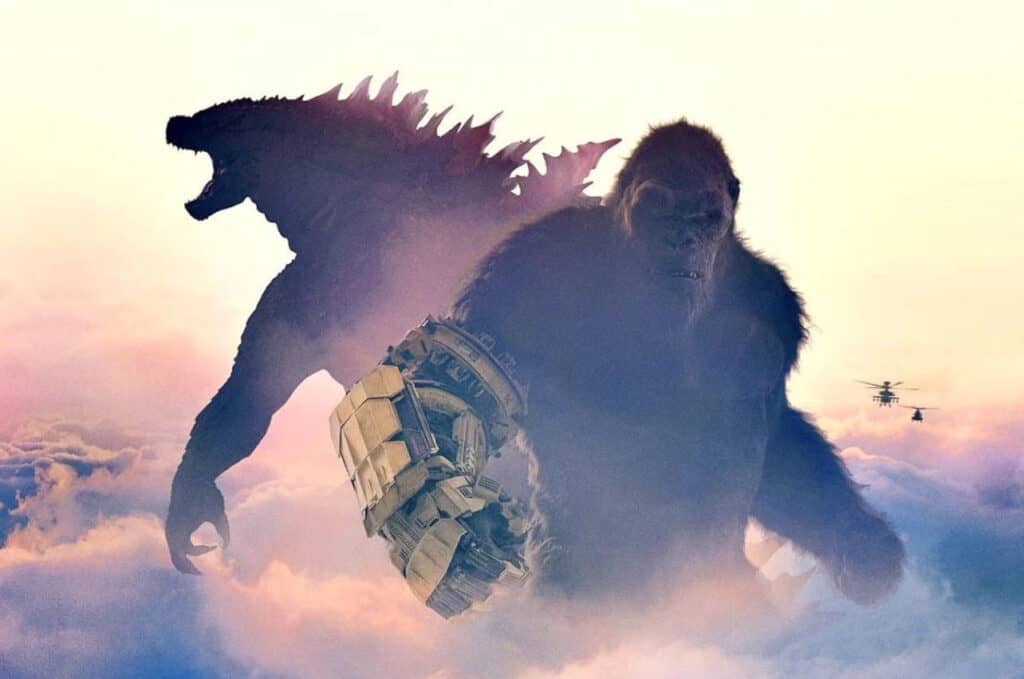For much of the past decade, videogames, in their ongoing quest to both provide ever-increasing levels of immersion and be taken seriously by who even knows, have been trying really incredibly hard to resemble movies. Graphical fidelity has increased to such an extent that most AAA games actively chase photorealism and gritty “realistic” colour palettes in spite of how dated they’ll end up looking in a few years – just look at those early to mid-era PS3 and Xbox 360 games for prime examples. There was that strange trend where a whole bunch of games decided to ditch HUDs and other such vital display readouts entirely, trying instead to work them into the world of the game in a manner which made them needlessly unhelpful. And, of course, many a single-player campaign attempted to copy the cinematic language and translate tightly choreographed setpieces into playable videogames in a manner which rarely worked out for the best, often leading to a ludonarrative and cognitive dissonance between the game and storytelling sides (*coughcoughNaughtyDogcough*).
It was, and still is for those who have kept pursuing it, a fundamentally misguided endeavour, one that severely misunderstands the strengths and weaknesses of both mediums. But, weirdly, it’s also been going rather vice-versa. Movies have been increasingly attempting to resemble videogames. Sometimes that’s occurred through obvious gimmickry – Hardcore Henry took place entirely through the POV of its titular silent character whose face is only glimpsed a few times across the film’s 90 minutes, effectively making the audience the protagonist. Sometimes that’s occurred through adapting videogame tropes into cinematic storytelling without the plot explicitly being tied to videogames or a videogame property, most effectively with Edge of Tomorrow. And we now apparently live in a world, thanks to Academy Award winner Tom Hooper’s Cats, where studios will deliberately release unfinished movies to cinemas and patch them better a few days after opening.
This line of thought is relevant to Sam Mendes’ WWI action-drama 1917 because its central conceit – the movie is shot and edited to look like one unbroken take running in real time as two young British soldiers (George MacKay and Dean-Charles Chapman) on the Western Front in France are tasked with racing over to the Hindenburg Line with orders to call off an attack the next morning that will massacre two entire regiments – heavily resembles a videogame in execution. Faux-one-take movies have, of course, been an ever-present outlet of formal experimentation for as long as cinema has been a thing. Hitchcock’s Rope; the 2010 Uruguayan horror Silent House, and its 2012 American remake; perhaps most famously this decade the Oscar-winning Birdman; and, most relevantly to the kind of constant-motion movie 1917 is attempting to be, the 2015 German crime thriller Victoria. But even setting aside the obvious reference point of Call of Duty as well as recent efforts by games like God of War 2018, the conceit that Mendes has gone with and the manner in which he presents it – a constant forward motion with minimal character work or dialogue, sacrificing depth and emotion for visceral “you are there” immediacy – strongly recalls videogames which have been trying to replicate cinematic storytelling. Call of Duty, Medal of Honor, The Last of Us, Red Dead Redemption 2, the last of which was actually Mendes’ cited inspiration for the gimmick.
The results are a technical marvel but, as you may be able to ascertain from my just now having switched from “conceit” to “gimmick,” emotionally hollow. To some degree, knocking 1917 for being all style and zero lasting substance is unfair. For one, “technical marvel but emotionally hollow” has kind of been Mendes’ thing for his entire career, from American Beauty to Road to Perdition to even Skyfall. He’s basically the Aldi-brand Christopher Nolan, but it is a style which has worked every now and again, most notably in Jarhead. For two, if you choose to base your film around a one-take gimmick, or even just including a double-digit-length take like in One Cut of the Dead, you are admitting up front that the spectacle/fun of the thing is going to be the primary concern of your movie. Pure moviemaking first, lasting emotional and thematic resonance second. It’s a wilful sacrifice communicated upfront to the audience.
In 1917’s best moments, the gimmick genuinely works and offers an immediacy and tangibility to a war that, thanks to the sad truth of the limited means of documenting events at the time, can often be hard to grasp or misrepresented in other tellings. An early crossing of No Man’s Land is a phenomenal example of this. The fact that Mendes is unable to cleanly cut to another angle or speed up the passage of time, coupled with the 15 rating that many war dramas in recent years have done without, forces the viewer to understand the harrowing length that soldiers had to sprint across under hails of gunfire and the inhospitable bogs, muck, rats, and rotting corpses of cavalry and their own fellow humans which claimed just as many lives as the bullets. It’s the kind of fact that can be hard to fully grasp until clearly laid out as so here, standing in stark contrast to other depictions which make the crossing seem small and negligible aside from the gunfire. Elsewhere, there’s a night-time detour to a German-occupied village consumed by flames which plays like a horror movie, whilst the much-touted finale involving one last desperate sprint in the midst of an over-the-top charge is chaotic and thrilling.
On a raw filmmaking level, too, this is one of the best examples I’ve seen yet in putting together the illusion of a one-take movie – although, in actuality, it’s more like two-takes since there’s a narratively-important smash-cut to black just over halfway into the film. I’m the kind of person who can’t help but actively look out for the seams in these things, and by and large even I can’t tell you how Mendes, editor Lee Smith and cinematographer Roger Deakins pulled this off. It is shockingly rare to find the kinds of obvious stitches, like obscuring the view with a passing object or CGI-ing a character between shots, which normally occur in these kinds of productions. This is also an utterly gorgeous movie to look at which, y’know, duh, it’s Deakins. But the potential restraints of the gimmick prove to be absolutely nothing of the sort for the master of arresting cinematography as he uses his ever-moving camera to gently lead the audience’s attention to new points of view – a silhouetted body emerging from a burning hellscape slowly stalking towards one of our awestruck protagonists, a glint of reflected light from a watchtower alerting a sniper’s position just before he starts firing, a jamming log of drowned bodies floating slowly into view whilst cherry blossoms fall. That juxtaposition between natural beauty and the horrors of war is one that Mendes and Deakins rely upon a lot throughout 1917 but it’s also a button I would honestly have been fine with them hammering a few dozen more times, the effect never lessens.
At the film’s weakest moments, which is basically any moment where things slow down and take a breather, 1917’s gimmick makes the film feel like a big-budget videogame you’re not actually allowed to play. Because neither of our soldiers have much of a reason to talk out loud to each other about themselves, the characters never manage to progress past avatars or audience surrogates being ferried from one area to the next; it’s weird that I find myself actually missing Gravity’s clunkily-delivered psycho-examinations, but here we are. And since we’re being ferried about, none of the supporting cast – distractingly played by effectively-cameoing big name stars like Mark Strong and Benedict Cumberbatch, perhaps the most videogame-y aspect of the whole thing – get to display much depth or leave a lasting impression either. There’s a relatively long digression involving a French woman hiding out from the Germans with a baby that isn’t hers which keeps reaching for something profound but can’t quite manage it because there’s a touristy feeling to our time with her.
There’s precious little emotional connection to the material, I found. The film isn’t meant to be cathartic to any extent – one of the few leg ups 1917 gets on its obvious videogame inspiration is that it is unequivocally anti-war and goes to great unambiguous lengths to make that horror and indiscriminate futility abundantly clear – but I also never found myself particularly moved, either. The constant breaks and downtime cause the intensity which is supposed to offset that emotional hollowness to suffer from a stop-start sputter, only further highlighting how disconnected on a deeper level I felt from the movie at large. Mendes also relies extremely heavily upon the aforementioned Deakins for the visual legwork and Thomas Newman’s solid score for the audio side of things, and the latter’s efforts eventually resort to blatantly ripping off Hans Zimmer’s work on Dunkirk by the climax.
Dunkirk is honestly the elephant in the room here. Christopher Nolan’s WWII action-drama isn’t quite as much of a 1:1 comparison to Mendes’ 1917 as perhaps initially expected, but it is still the ghost Mendes is most chasing and is frankly the better version of the two unconventional time-sensitive heavily-stylised war dramas. Nolan’s earlier movie managing to provide the technical wizardry within a show-off-y narrative/presentation gimmick without sacrificing the deeper lasting emotional catharsis as Mendes’ work does, in fact even managing to better humanise its soldiers through the messy conflict and human flaws they exhibit throughout his story. And even with the handicap of a 12 rating, Nolan’s film is way more intense than 1917, keeping up the tension and visceral gripping thrills from practically the opening frame all the way through to the train back home. In doing both of those things, Dunkirk’s central gimmick (three disparate timelines which eventually sync up come the end) ceased to be a gimmick and resultantly reached a transcendence that Mendes’ film, for all its efforts and craftmanship, just cannot.
1917 is solid. In a year drowning with busted Oscar Bait, it’s refreshing to get a film that is genuinely enjoyable, well put together, and works as a movie outside of blatantly chasing statuettes. It’s fine. I liked watching it. I’ll also forget about it entirely within a week.
[youtube https://www.youtube.com/watch?v=YqNYrYUiMfg&w=560&h=315]
1917 is now playing in cinemas nationwide.






